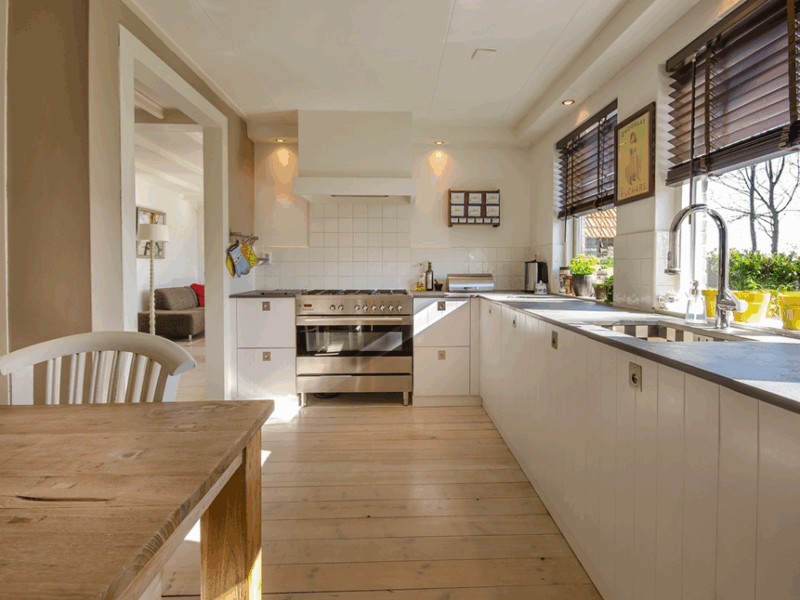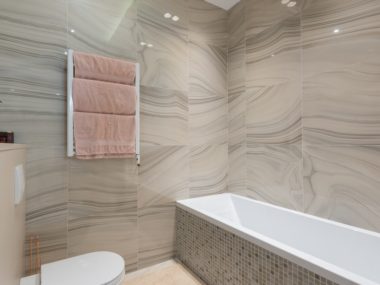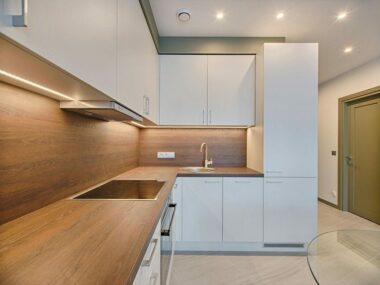Expanding your kitchen doesn’t always require tearing down walls or costly structural changes. For homeowners in Seattle seeking functional, non-invasive solutions, creative design and smart space utilization can transform cramped kitchens into spacious, modern hubs. This guide explores innovative ideas to maximize your kitchen’s footprint without the mess of wall removal while aligning with Seattle’s building codes and climate needs.
Why Avoid Wall Removal?
Moving load-bearing walls in older Seattle homes (common in Capitol Hill or Queen Anne) can trigger costly engineering work, permits, and delays. Non-invasive expansions offer:
● Lower Costs: Save 30–50% compared to wall demolition.
● Faster Timelines: Projects often finish in 2–4 weeks vs. 8+ weeks for structural changes.
● Preserved Character: Maintain original layouts in historic homes.
Idea 1: Bump-Out Additions
A bump-out extends your kitchen outward by 2–4 feet, creating space for an island, breakfast nook, or pantry.
Key Benefits:
● Adds 50–100 sq. ft. without major foundation work.
● Ideal for Seattle’s narrow lots where lateral expansion is limited.
● Complies with Seattle’s 25% lot coverage rules if under 200 sq. ft.
Cost in Seattle: 15,000–35,000 (vs. $50k+ for full additions).
Idea 2: Utilize Adjacent Spaces
Repurpose underused areas connected to your kitchen:
|
Space |
Conversion Idea |
Avg. Cost |
|
Formal Dining Room |
Merge with the kitchen for open-concept cooking. |
8k– 8k–20k |
|
Laundry Room |
Relocate laundry to basement; expand kitchen. |
10k– 10k–25k |
|
Unused Porch |
Enclosed with insulated windows for a sunroom. |
12k– 12k–30k |
Pro Tip: Work with a finest remodeling contractor to assess load-bearing requirements and HVAC adjustments.
Idea 3: Vertical Storage & Smart Cabinetry
Maximize height and depth with space-saving solutions:
● Floor-to-Ceiling Cabinets: Gain 30% more storage (ideal for small Craftsman kitchens).
● Pull-Out Pantries: Utilize gaps between walls or appliances.
● Overhead Pot Racks: Free up cabinet space.
Popular Brands:
● Rev-A-Shelf (pull-out systems)
● IKEA SEKTION (customizable tall cabinets)
Idea 4: Convert a Closet or Nook
Transform nearby closets or alcoves into functional zones:
● Coffee Station: Convert a broom closet with built-in shelving.
● Beverage Fridge Nook: Repurpose a coat closet near the dining area.
● Spice Kitchen: Turn a mudroom corner into a secondary prep zone.
Idea 5: Mobile Islands & Foldable Features
For ultra-budget-friendly flexibility:
● Rolling Islands: Add prep space and storage (e.g., Costco’s John Louis model).
● Fold-Down Tables: Mount to walls for compact dining.
● Magnetic Knife Strips: Free up counter space.
Best For: Renters or homes where permanent changes aren’t feasible.
Budget & ROI Breakdown
|
Solution |
Avg. Cost |
ROI |
Timeline |
|
Bump-Out Addition |
15k– 15k–35k |
60–75% |
3–5 weeks |
|
Dining Room Merge |
8k– 8k–20k |
70–85% |
2–3 weeks |
|
Vertical Cabinetry |
3k– 3k–10k |
80–90% |
1–2 weeks |
|
Closet Conversion |
2k– 2k–7k |
65–80% |
1–2 weeks |
Source: 2024 Remodeling Magazine Cost vs. Value Report (Pacific Northwest)
FAQs: Non-Invasive Kitchen Expansions
Q: Do I need permits for a kitchen bump-out in Seattle?
A: Yes, bump-outs over 200 sq. ft. require permits. See more about home additions for guidance.
Q: Can I expand my kitchen without losing backyard space?
A: Yes! Vertical storage and closet conversions add functionality without sacrificing outdoor areas.
Q: How do I match new cabinets to my existing kitchen style?
A: A best remodeling contractor can source custom finishes or refinish old cabinets for cohesion.
Q: Are mobile islands sturdy enough for heavy appliances?
A: Opt for islands with weight ratings >200 lbs and locking wheels.
Safety & Compliance Tips
● Electrical Updates: Seattle requires GFCI outlets within 6 feet of sinks.
● Ventilation: Install 150+ CFM range hoods to meet Seattle’s mechanical code (SMC 22.808).
● Flooring: Use slip-resistant tiles (COF ≥0.5) for rainy climate safety.
Why Hire a Professional?
While DIY projects save money, a certified best remodeling contractor ensures:
● Compliance with Seattle’s energy codes (WSEC).
● Proper load assessments for bump-outs.
● Seamless integration with existing plumbing/electrical systems.
Conclusion
Expanding your kitchen without moving walls is achievable through clever design, repurposed spaces, and strategic additions. Whether you’re eyeing a bump-out, vertical storage, or a closet conversion, these solutions balance functionality, aesthetics, and budget.
Ready to Transform Your Kitchen? See more about home additions to explore our Seattle-specific solutions.













